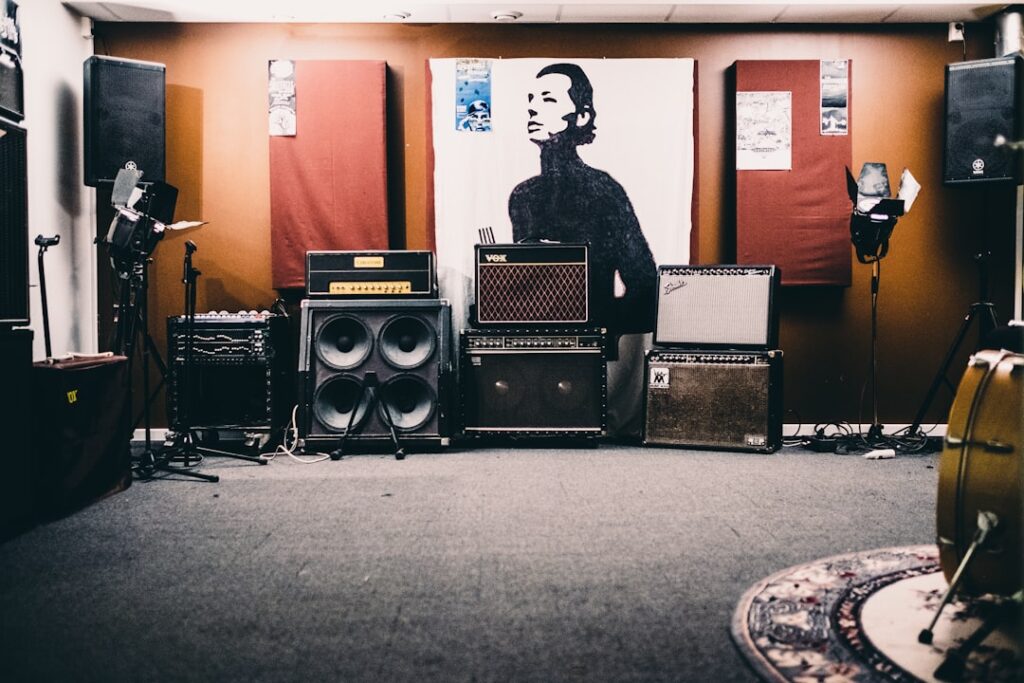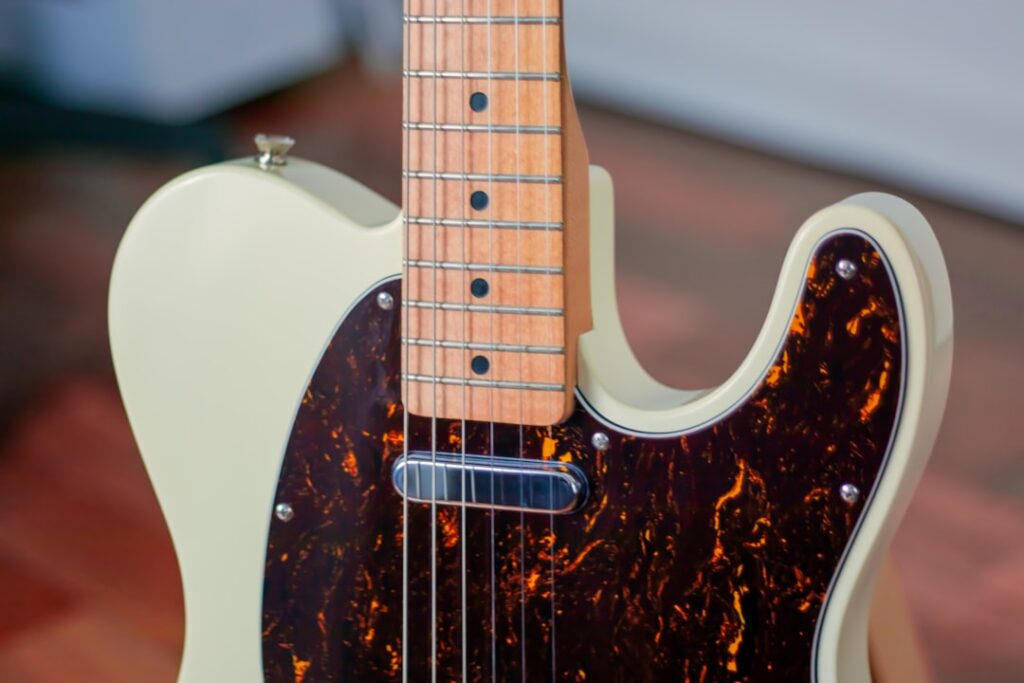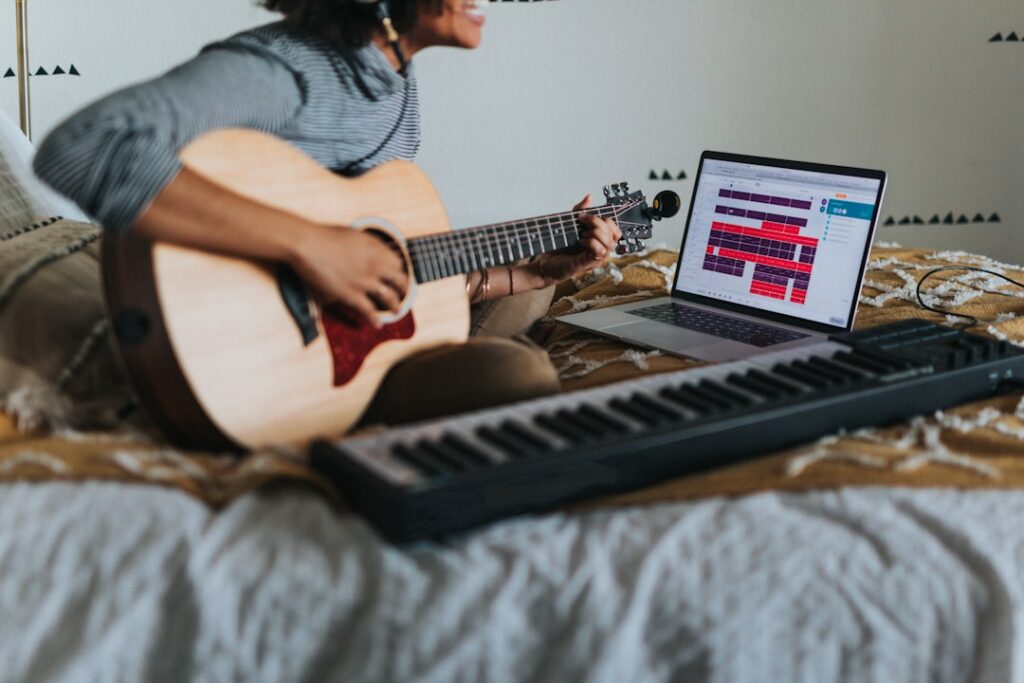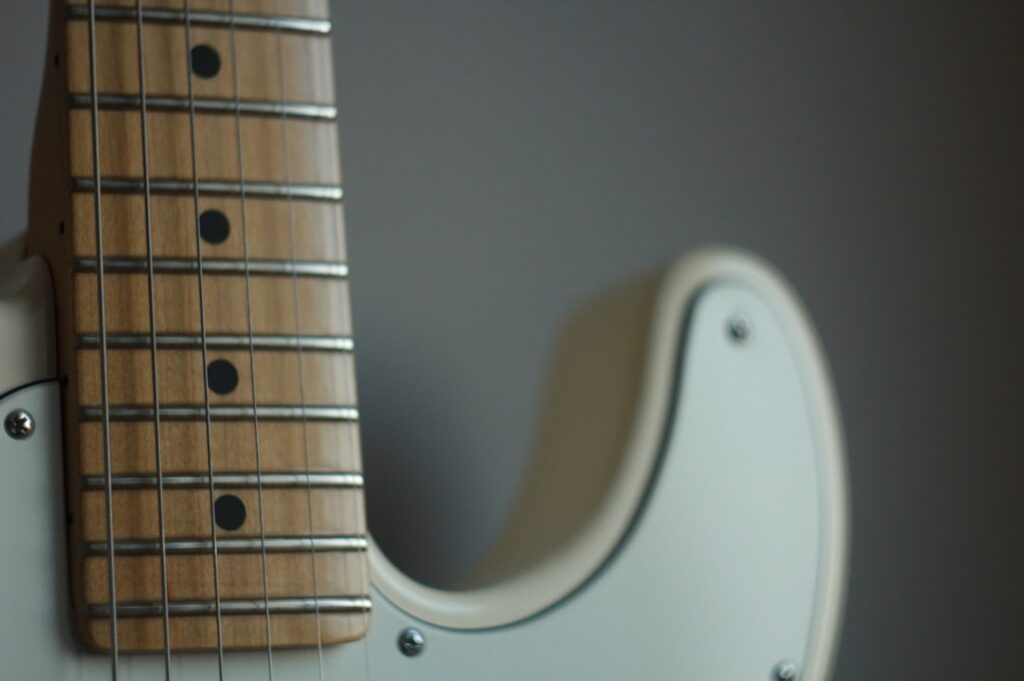- 1. Introduction: Who is Ichika Nito?
- 2. Amplifier Setup & Preferences [Ichika Nito / Dios]
- 3. Guitar Models & Their Characteristics [Ichika Nito / Dios]
- 5. Sound Design, EQ, and Mixing Techniques [Ichika Nito / Dios]
- 6. Affordable Gear to Recreate Ichika Nito’s Tone [Dios / Ichika Nito]
- 7. Final Thoughts: The Essence of Ichika Nito’s Guitar Tone
1. Introduction: Who is Ichika Nito?
Ichika Nito is a Japanese guitarist renowned for his highly original playing style, which fuses tapping, slapping, and intricate melodic lines. He’s a core member of the band Dios and also maintains a significant solo presence through his YouTube channel, where he shares original compositions and creative covers that have captured global attention.
Notable tracks such as “&Shissou” and “Jiyuu” by Dios showcase his precise technique and distinctive tonal expression. Ichika’s tone spans from ultra-clean sounds with lush reverb to dynamically expressive distortion—making his gear setup and tone-crafting methods an inspiring reference for guitarists worldwide.
▶ Search Dios Official YouTube Videos
2. Amplifier Setup & Preferences [Ichika Nito / Dios]

Ichika’s amp choices reflect his obsession with “density of tone” and “organic feel.” For live shows and studio sessions with Dios, he typically uses gear that preserves the warmth and airiness of tube amps, while for home recordings he leans on flexible tools like the KEMPER Profiling Amp.
One of his main amps for live performances is the Divided by 13 JRT 9/15. He often uses the 9W (6V6) mode, which delivers rich compression and smooth highs typical of tube circuits. His dial settings are particularly intentional—CUT at around 1 o’clock and TONE at about 2:30—to ensure a responsive touch and articulate tone.
For versatility in live scenarios, Ichika also utilizes the KEMPER Profiling Amplifier, loaded with his own custom profiles. This allows him to instantly switch between tones that match each song’s needs—a crucial feature given Dios’s often space-conscious, layered arrangements.
In some studio or testing sessions, he uses a Mesa Boogie Dual Rectifier with a 4×12 cab to achieve high-gain sounds, especially seen in demo videos for Ibanez. For pristine clean tones, he occasionally switches to amps like the Fender Twin Reverb or Roland JC-120, both favored for their clarity and compatibility with spatial effects. The JC-120, often found in studios, is especially effective for ambient clean textures.
Interestingly, he’s also been spotted using a Markbass Little Mark Ninja—a bass amp—in select live or recording sessions. This indicates his sensitivity to frequency ranges even outside traditional guitar bands.
| Model | Brand | Amazon Link | Band | Guitarist | Notes |
|---|---|---|---|---|---|
| Divided by 13 JRT 9/15 | Divided by 13 | Link | Dios | Ichika Nito | Main live amp. 9W (6V6), CUT @1 o’clock, TONE @2:30 |
| KEMPER Profiling Amplifier | Kemper | Link | Dios | Ichika Nito | Live tone switching; uses custom profiles |
| Mesa Boogie Dual Rectifier | Mesa Boogie | Link | Dios | Ichika Nito | Used in test/demo sessions with high-gain settings |
| Fender Twin Reverb | Fender | Link | Dios | Ichika Nito | Used for pristine cleans in certain recordings |
| Roland JC-120 | Roland | Link | Dios | Ichika Nito | Studio standard; pairs well with mod/time effects |
| Markbass Little Mark Ninja | Markbass | Link | Dios | Ichika Nito | Used occasionally for low-end response |
3. Guitar Models & Their Characteristics [Ichika Nito / Dios]
Ichika Nito’s guitar selection reflects his dynamic expression across both Dios and his solo work. His signature models from Ibanez—the ICHI10 and ICHI00—are central to his tone palette and designed to support his technical and expressive playstyle.
The Ibanez ICHI10, his first signature model, features a pickup configuration that allows nuanced tones, especially in rear+center or front+center mixes. The bright yet soft attack heard in songs like “&Shissou” highlights this model’s versatility. Ichika often plays with the tone rolled back slightly and the volume knob maxed out, a setup that enhances dynamics and articulation.
The next-gen Ibanez ICHI00 brings a Talman-inspired body and broader tone options. It’s especially suited for songs that require rhythmic cutting and percussive clarity, such as “Jiyuu.” Its ergonomic design also supports agile movement during live shows.
For thicker, more resonant tones in Dios tracks like “Mata Raisei” or “Underground,” Ichika often turns to the Ibanez AZS2200. Inspired by classic Tele-style guitars, it produces warm, full-bodied sounds that work beautifully in layered arrangements, particularly when using the neck pickup.
When more acoustic or nylon-string flavor is needed, Ichika reaches for guitars like the Ibanez FRH10N (electro-nylon) or Fender Telecaster Thinline, known for their semi-hollow tonal character. For hybrid acoustic-electric textures, the Fender Acoustasonic Telecaster is also part of his toolkit—ideal for blending clean leads with ambient backing layers.
In more technical solo pieces or YouTube videos, Ichika has used 7-string models like the Ibanez S5527QFX and Ibanez J Custom RG Series. He also experiments with vintage-style guitars like Fender Stratocasters, Jazzmasters, and Mustangs, as well as ultra-modern headless designs like the Strandberg Boden. This wide array showcases his versatility and sonic curiosity.

| Model | Brand | Amazon Link | Band | Guitarist | Type | Notes |
|---|---|---|---|---|---|---|
| Ibanez ICHI10 | Ibanez | Link | Dios | Ichika Nito | Signature Model | Used in “&Shissou.” Center PU blend, tone rolled off, volume maxed |
| Ibanez ICHI00 | Ibanez | Link | Dios | Ichika Nito | Signature Model | Talman-based, used in “Jiyuu” and rhythm-heavy tracks |
| Ibanez AZS2200 | Ibanez | Link | Dios | Ichika Nito | Tele-style | Warm tone for “Mata Raisei,” “Hanataba,” etc., mainly neck PU |
| Ibanez FRH10N | Ibanez | Link | Dios | Ichika Nito | Electro-Nylon | Thin-body nylon, suited for solos and clean sections |
| Fender Telecaster Thinline | Fender | Link | Dios | Ichika Nito | Semi-Hollow | Natural mids and lightweight; versatile tone |
| Fender Acoustasonic Telecaster | Fender | Link | Dios | Ichika Nito | Hybrid Acoustic | Used for acoustic textures within Dios songs |
| Ibanez S5527QFX | Ibanez | Link | Dios | Ichika Nito | 7-string | Used in solo/technical performances on YouTube |
| Strandberg Boden | Strandberg | Link | Dios | Ichika Nito | Headless | Ideal for modern techniques; seen in online sessions |
Ichika Nito’s effects setup centers around practicality, tonal flexibility, and precise control. While he occasionally uses standalone pedals, his core rig—especially for live performances—is dominated by the all-in-one power of the Line 6 Helix.
The Helix handles everything from amp modeling and spatial effects to EQ and volume control. Ichika typically uses four main presets: CLEAN, CRUNCH, GAIN, and LEAD. Each is tailored to a specific musical role. For instance, his CLEAN setting emphasizes sparkling highs with subtle drive, while the CRUNCH preset layers in phaser and reverb for a 3D ambiance.
Outside of Helix, he also integrates select pedals to shape specific tones. One notable example is the Horizon Devices Precision Drive, seen in Instagram posts and BOSS collaborations. This pedal blends overdrive with a built-in noise gate—perfect for maintaining articulation in aggressive styles like tapping or percussive slap techniques that Ichika frequently uses.
For spacious reverb textures, Ichika uses the BOSS RV-6. This pedal offers lush hall and modulated reverbs, and he uses it both in studio recordings and live rigs, often in tandem with DI (direct input) signals.
Another favorite is the Fender Mirror Image Delay, which provides versatile echo settings from short slapback to more ambient delays. It’s often used in studio sessions and YouTube content, and pairs well with the Helix’s internal delay engines to create immersive spatial layers.
Overall, Ichika’s pedalboard is a model of efficiency—designed to switch instantly between expressive tonal landscapes while preserving a clean, noise-free signal. His approach shows a strong emphasis on clarity and responsiveness over complexity.
| Model | Brand | Amazon Link | Band | Guitarist | Effect Type | Notes |
|---|---|---|---|---|---|---|
| Line 6 Helix | Line 6 | Link | Dios | Ichika Nito | Multi-FX Processor | Main unit for live use. 4 custom presets for different tones |
| Horizon Devices Precision Drive | Horizon Devices | Link | Dios | Ichika Nito | Overdrive | Includes noise gate. Excellent for dynamic picking styles |
| BOSS RV-6 | BOSS | Link | Dios | Ichika Nito | Reverb | Studio/live use. Supports modulated and hall reverb modes |
| Fender Mirror Image Delay | Fender | Link | Dios | Ichika Nito | Delay | Used in Instagram/YouTube content. Often paired with Helix |
5. Sound Design, EQ, and Mixing Techniques [Ichika Nito / Dios]

At the core of Ichika Nito’s tone is a consistent pursuit of “clean transparency with depth”—a sound that maintains clarity without becoming sterile, even when distorted. In Dios, where synths and programmed elements often play a prominent role, Ichika carefully crafts his guitar tone to blend seamlessly without getting lost in the mix.
Live, he relies heavily on the Line 6 Helix, combining amp modeling with IR (impulse response) cabinet simulations. His presets avoid overly drastic filtering. Instead of severely cutting lows or highs, Ichika preserves the natural top end and sets up his patches to respond dynamically to picking strength.
EQ-wise, he lightly dips the midrange around 500–800Hz to create space, while giving a gentle boost around 2kHz for definition and presence. This helps his guitar stand out naturally in dense arrangements without sounding harsh or overbearing.
For recording, Ichika uses high-quality audio interfaces like the Apogee JAM X or Antelope Discrete 4 Synergy Core. When applying delays or reverbs in the DAW (typically Cubase), he pans individual tracks and uses mid/side (M/S) processing to expand the stereo image—creating a wide, immersive space for his guitar parts.
There’s also a clear philosophy in how he treats different sections. For example, deep reverb is added to lead parts, while cutting effects entirely during rhythm or muted chord sections helps tighten the feel. Even reverb types and placements (e.g., hall vs. room, stereo vs. mono) are strategically selected per section.
A unique aspect of Ichika’s tone is his control over distortion through picking dynamics. Rather than locking in a fixed input gain, he maps real-time controls—like expression pedals or Helix input sensitivity—to vary gain and saturation depending on how hard he plays. This gives him expressive, touch-sensitive control during live or recorded performances.
When mixing, Ichika ensures the guitar doesn’t dominate the low end. Frequencies below 100Hz are usually filtered out, while subtle EQ adjustments prevent the tone from becoming too thin. The result is a balanced, modern tone that fits comfortably in pop-rock and ambient mixes alike.
Ichika’s sound is more than just a patch or preset—it’s a holistic system combining player touch, pedal response, amp settings, and post-processing. This integration is what allows his guitar to breathe in a mix while remaining expressive and distinct.
6. Affordable Gear to Recreate Ichika Nito’s Tone [Dios / Ichika Nito]
While Ichika Nito’s tone is known for its nuance and expressive depth—from crystalline cleans to ambient delays and dynamic gain shifts—you don’t need high-end pro gear to approximate his sound. In this section, we explore affordable alternatives (roughly in the $100–$500 range) that can get you close, especially for beginners and intermediate players.
First up is the Line 6 POD Go, an excellent mid-range multi-effects unit powered by the same HX engine found in the more expensive Helix. It offers high-quality amp and effects modeling, built-in USB audio interface for recording, and access to a wide range of presets. It excels at delivering Ichika-style tones such as clean highs with sparkle, layered modulation, and spacious ambiance.
Another great option is the NUX MG-30 from the Verdugo Series. This compact multi-effects unit supports impulse responses (IR) for realistic cabinet simulation, making it ideal for line-in recording. With creative preset design, it can achieve atmospheric tones and dynamic gain similar to Ichika’s approach.
For delay, the tc electronic Flashback 2 is a top pick. It’s a versatile compact pedal with TonePrint support, allowing you to load custom delay profiles. Whether it’s subtle repeats or immersive ambient tails, it handles the stereo and rhythmic delay needs seen in many of Ichika’s tracks.
Because Ichika’s tone is so touch-sensitive, adding a compressor can help shape the picking dynamics. The BOSS CP-1X or MXR Dyna Comp Mini are both solid choices that help bring out clarity in clean tones while smoothing transients for consistency without sounding squashed.
For acoustic-style playing or modeling tones, consider the YAMAHA THR30IIA, which offers acoustic guitar emulation in a small desktop-friendly format. Alternatively, the Fender Acoustasonic Player delivers a hybrid acoustic-electric experience and, while pricier, the Player series offers an affordable entry point for modern tone versatility.
| Category | Model | Brand | Amazon Link | Band | Guitarist | Notes |
|---|---|---|---|---|---|---|
| Multi-FX Processor | POD Go | Line 6 | Search Link | Dios | Ichika Nito | Affordable Helix-style tones with recording capabilities |
| Multi-FX Processor | MG-30 | NUX | Search Link | Dios | Ichika Nito | IR support and modern tones in a compact format |
| Delay | Flashback 2 | tc electronic | Search Link | Dios | Ichika Nito | TonePrint-capable; easy access to ambient delay sounds |
| Compressor | CP-1X | BOSS | Search Link | Dios | Ichika Nito | Helps shape clean tone and boost articulation |
| Acoustic Simulator / Amp | THR30IIA | YAMAHA | Search Link | Dios | Ichika Nito | Compact solution for home acoustic-style playing |
7. Final Thoughts: The Essence of Ichika Nito’s Guitar Tone

At its heart, Ichika Nito’s sound is a masterclass in nuance, dynamics, and spatial awareness. Whether clean or slightly driven, his tone is never flat—it breathes, responds, and evolves with his playing. This is not simply the result of expensive gear, but a reflection of thoughtful design, expressive intent, and meticulous execution.
His guitars—most notably the Ibanez ICHI10 and ICHI00—are built around expressive pickup combinations. By keeping volume on full and rolling back tone slightly, he allows picking dynamics to influence how the guitar responds, giving him control over saturation and texture without touching a knob mid-song.
On the amp side, the Divided by 13 JRT 9/15 gives him organic tube compression and subtle breakup, especially when used in its 9W 6V6 mode. In contrast, he uses modern tools like KEMPER and direct audio interfaces for hybrid studio work—blending analog feel with digital precision.
His use of Line 6 Helix as the central hub of his tone is another hallmark. The presets aren’t just patches—they’re soundscapes tailored to the emotion and structure of each song. Modulation, delay, and reverb are deployed with purpose, not excess. The result is a tone that complements the arrangement, rather than overpowering it.
If you’re aiming to emulate his sound, the first step isn’t gear—it’s mindset. Focus on quality clean tones, response to touch, and subtle spatial awareness. Tone is more than brightness—it’s the way your playing breathes through the gear. Using IRs for cab realism, proper compressor settings, and understanding volume/tone knob interplay will get you much further than simply copying settings.
One of the most unique aspects of Ichika’s sound is his sense of silence. He understands that “space” is as important as “note.” In the gaps, there’s still music. That attention to dynamics and contrast—rather than just distortion or speed—is what makes his tone emotionally resonant.
Ultimately, recreating Ichika’s tone isn’t about nailing a preset—it’s about reading the blueprint of his sonic architecture. Take the time to explore your own gear, listen to your playing in context, and appreciate how expression is built from interaction—not just components.

![【Ichika Nito】How to Recreate the Sound of Dios + Guitar Gear & Tone Setup [Amp & Effects Guide]](https://guitarkizaihikaku.com/wp-content/uploads/2025/09/ChatGPT-Image-2025年9月4日-11_04_11.png)



